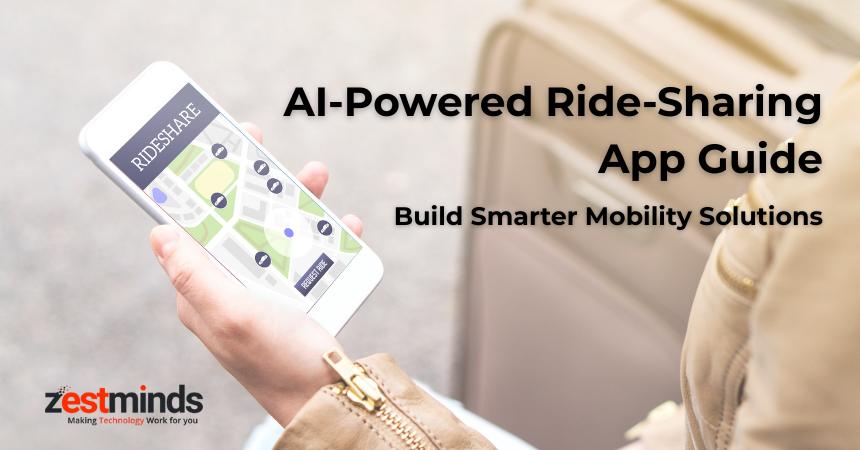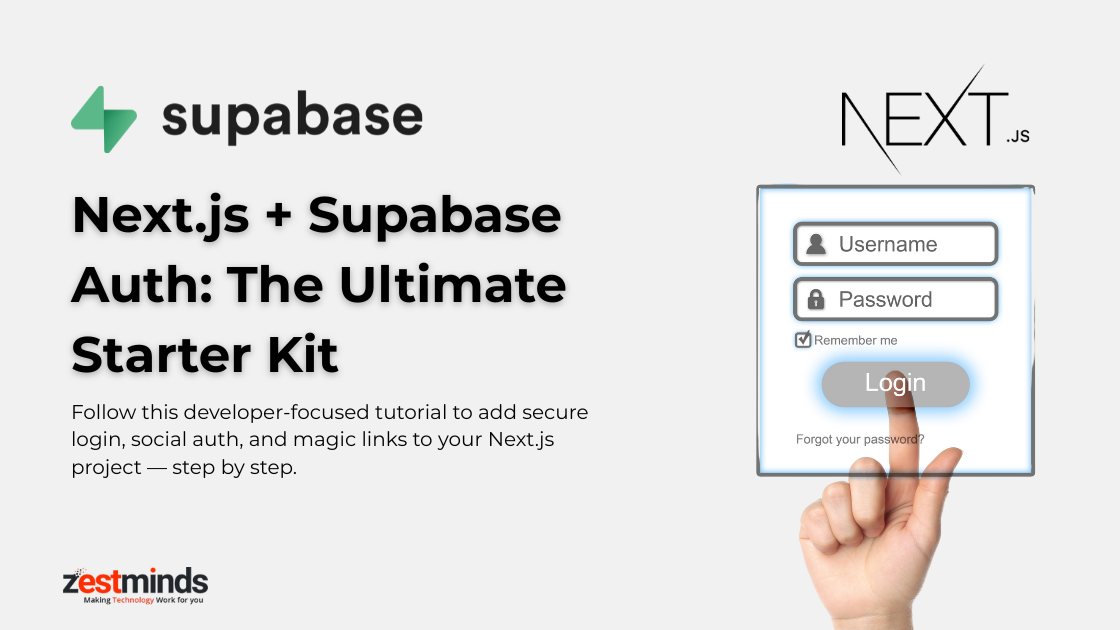Computer Vision in AI: How Machines See, Understand, and Act Like Humans
Computer vision in AI teaches machines to see, interpret, and understand the world around them. It powers your phone’s face unlock, autonomous cars, and factory inspection robots. This guide by Zestminds explores how it works, real-world use cases, and how startups can leverage it for growth, without deep technical expertise.
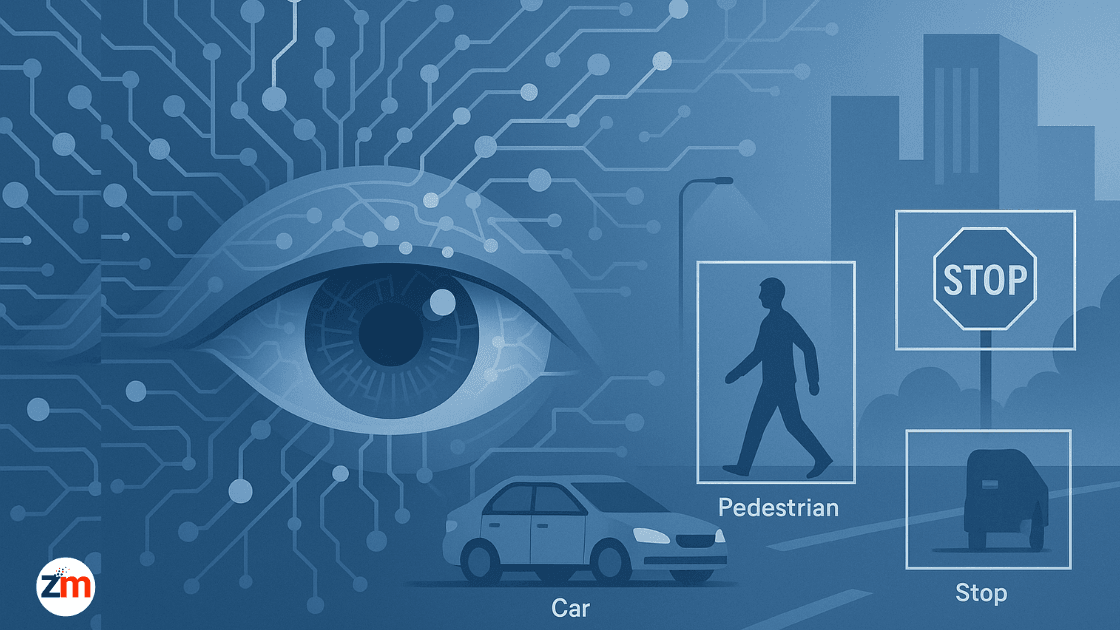
What Is Computer Vision in AI (Explained Simply)
At its core, computer vision is about giving machines eyes and brains. It converts images and videos into actionable insights.
Simple Definition and Analogy
Teaching computer vision is like teaching a child to recognize animals. You show thousands of pictures until patterns emerge—except machines learn millions of times faster. Each pixel becomes data, and each data pattern builds recognition.
Why It's Important
- Retailers use vision AI to track stock and detect theft.
- Healthcare teams rely on it for medical imaging and diagnostics.
- Manufacturers detect defects with 99% accuracy in milliseconds.
Human Vision vs Machine Vision
Humans see with emotion and experience. Machines see with precision and persistence. Together, they enable better decisions across industries.
Explore Zestminds AI Solutions →
How Machines See: The Technology Behind Computer Vision
Every visual AI system begins with pixels. Algorithms turn those pixels into patterns, then patterns into meaning.
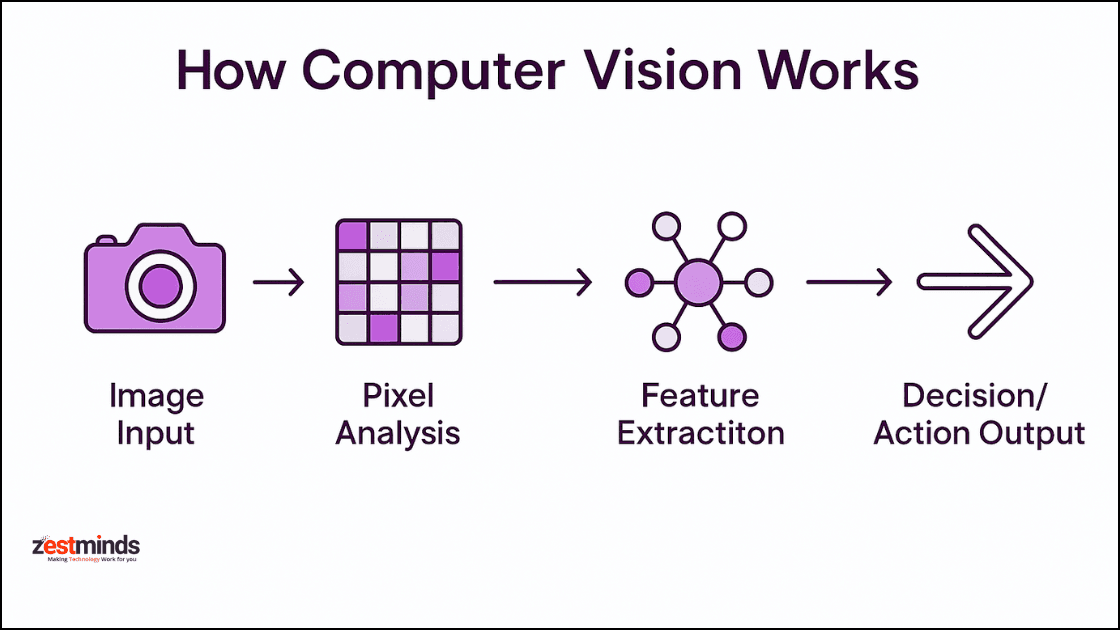
From Pixels to Patterns
Imagine an airport scanner checking luggage. The machine doesn't see a bag—it reads colors, edges, and textures. Step-by-step, it builds context until it confidently labels what it detects.
Neural Networks and Deep Learning
The magic happens through Convolutional Neural Networks (CNNs). These mimic human neurons, detecting lines, shapes, and textures in layers. Zestminds uses CNNs to build vision systems that identify products, inspect quality, and improve road safety analytics globally.
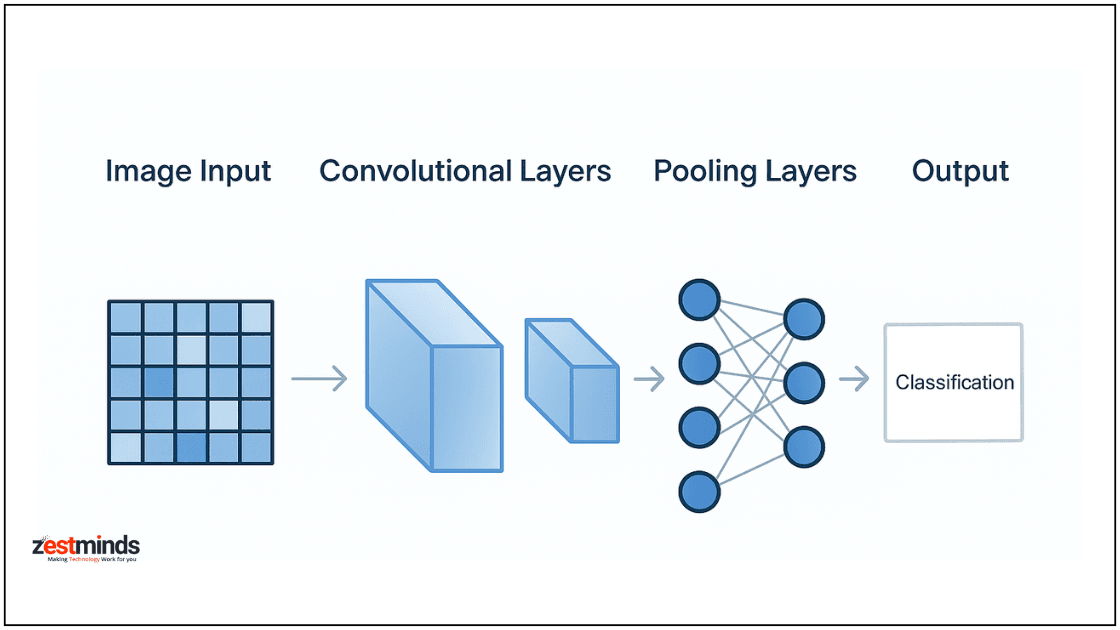
Example: Recognizing a Stop Sign
A machine analyzes color (red), shape (octagon), and text ("STOP"). Once confidence passes a threshold, it confirms the result—making autonomous driving safer and faster.
Learn About AI Vision Systems →
How Machines Understand: From Seeing to Decision-Making
Recognition isn't enough—machines must also understand what they see.
Object Detection vs Image Classification
- Image classification identifies one object ("a cat").
- Object detection identifies multiple objects and their locations ("two cats, one dog").
Understanding Context
Through semantic segmentation, AI splits images into zones—like "sky," "road," or "person." This allows drones to land safely or systems to flag hazards in real time.
When Machines Misinterpret
Errors happen when lighting or angles distort input. Zestminds trains models with diverse global datasets to ensure accuracy across different conditions and demographics.
Real-World Applications of Computer Vision
Retail and E-Commerce
- Visual search and virtual try-ons improve user experience.
- Smart shelves detect stock-outs instantly.
- Vision-based analytics optimize store layouts.
Zestminds built an AI visual search engine that cut product discovery time by 70% for a fashion startup.
Healthcare
AI assists radiologists by identifying early-stage conditions in scans. According to IBM, vision AI reduces diagnostic delays and increases detection accuracy.
Automotive
Self-driving systems use AI vision to recognize lanes, signs, and pedestrians, enhancing road safety.
Agriculture
Drones powered by vision AI analyze crops, detect pests, and optimize irrigation. As MarketsandMarkets reports, the vision AI market could surpass $30B by 2030.
Security
Smart surveillance cameras don't just record—they interpret. Vision AI detects anomalies and alerts security teams instantly.
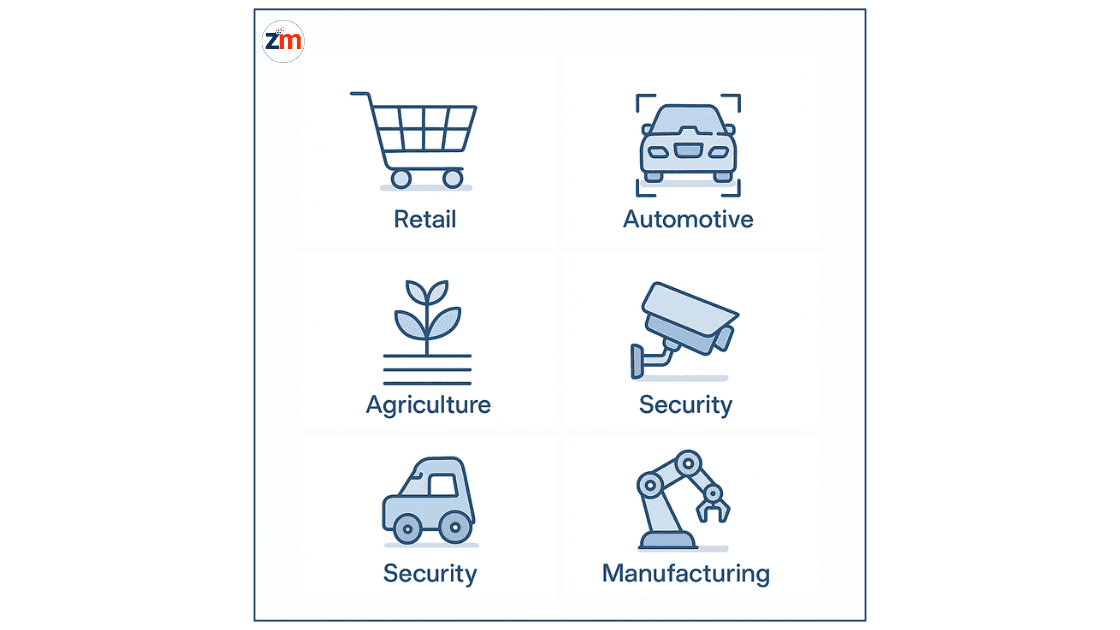
Challenges and Ethics in Computer Vision
Data Bias
Training on narrow datasets can cause bias. Zestminds ensures fairness by using diverse data and continuous model audits.
Privacy & Compliance
With GDPR and CIPA §638.51, compliance is critical. Auditzo and Zestminds ensure every AI model is lawfully auditable.
Technical Barriers
High GPU costs once limited adoption, but edge AI and cloud platforms now make it scalable for startups.
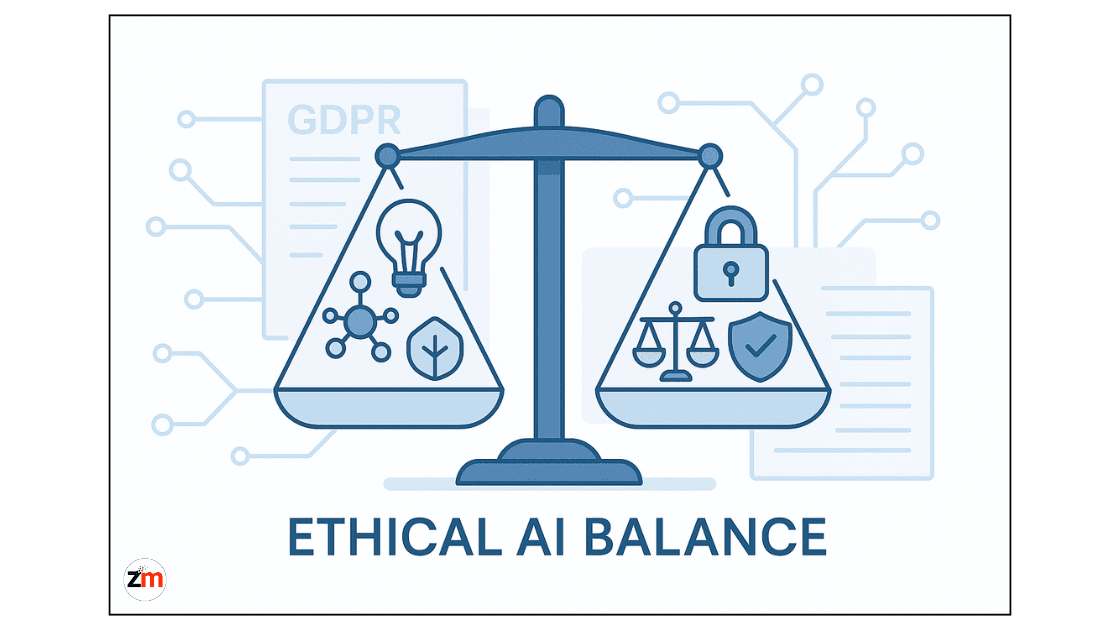
The Future: GPT, Multimodal AI & Beyond
The next frontier is multimodal AI—where text, sound, and vision blend seamlessly.
Vision Transformers
New models like ViT read images contextually like text. They enable AI to answer "What's happening in this image?" instead of just labeling it.
Computer Vision + GPT (GPT-4o)
GPT-4o merges vision and language. You can upload a screenshot and ask, "What can be improved here?"—and it responds intelligently. This is reshaping design, automation, and marketing workflows.
The Road Ahead
Zestminds helps global startups deploy visual AI safely, ethically, and at scale. The question isn't if you'll use vision AI—but how soon.
Book Your Free AI Consultation →
How Founders Can Start—No Coding Required
Prototype with APIs
Start small using Google Vision, AWS Rekognition, or OpenCV to validate your idea before scaling.
Partner with Experts
Work with Zestminds AI developers to turn MVPs into enterprise-ready solutions. Our team manages datasets, training, deployment, and compliance.
Measure ROI
- Track model accuracy and performance over time.
- Benchmark against manual operations.
- Retrain models periodically for optimal ROI.
Let's Build Your Vision AI Project →
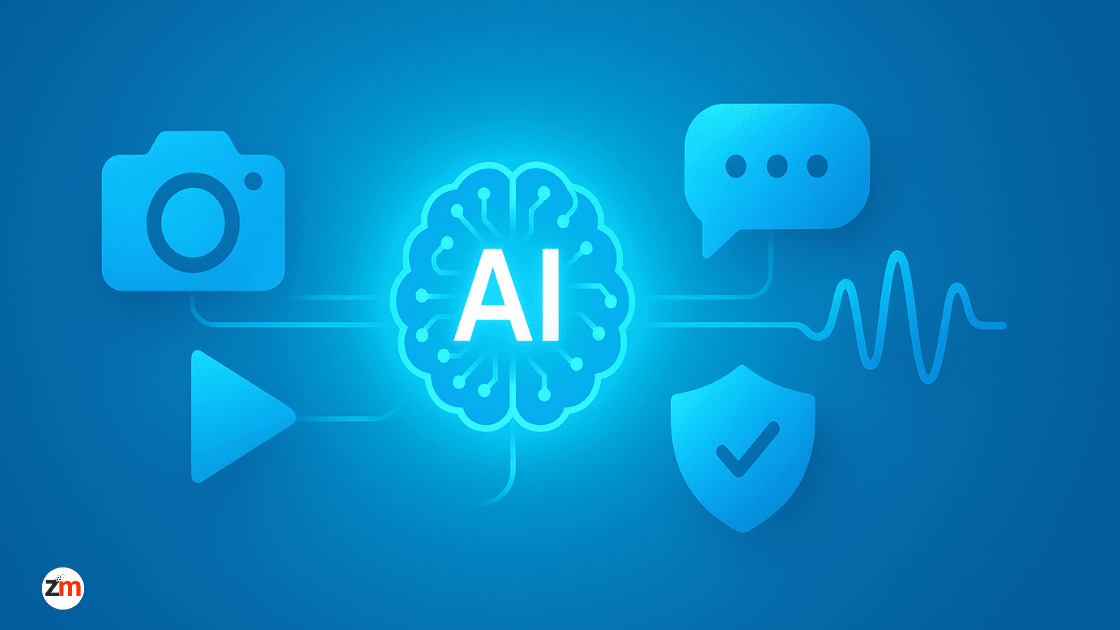
Summary: Why Computer Vision Is the Future
Computer vision connects human insight with machine precision. It's transforming how businesses see and act. Zestminds has delivered AI systems across five continents—helping companies achieve faster decisions, safer operations, and smarter products.
Talk to the Zestminds AI Team →
Frequently Asked Questions
What is computer vision in AI in simple words?
It's a branch of AI that enables computers to see, recognize, and understand visual data—just like humans, but faster and more accurately.
Can a startup use computer vision without experts?
Yes. With pre-built APIs and Zestminds' support, startups can deploy MVPs using AI vision in weeks.
How do GPT and computer vision work together?
Modern models like GPT-4o combine text and vision, enabling machines to describe, analyze, and respond to visual information—ushering in multimodal intelligence.
Table of Contents
- What Is Computer Vision in AI (Explained Simply)
- How Machines See: The Technology Behind Computer Vision
- How Machines Understand: From Seeing to Decision-Making
- Real-World Applications of Computer Vision
- Challenges and Ethics in Computer Vision
- The Future of Computer Vision: GPT, Multimodal AI & Beyond
- How Founders Can Start — No Coding Required
- Summary: Why Computer Vision Is the Future
- Frequently Asked Questions

Shivam Sharma
About the Author
With over 13 years of experience in software development, I am the Founder, Director, and CTO of Zestminds, an IT agency specializing in custom software solutions, AI innovation, and digital transformation. I lead a team of skilled engineers, helping businesses streamline processes, optimize performance, and achieve growth through scalable web and mobile applications, AI integration, and automation.
Stay Ahead with Expert Insights & Trends
Explore industry trends, expert analysis, and actionable strategies to drive success in AI, software development, and digital transformation.

